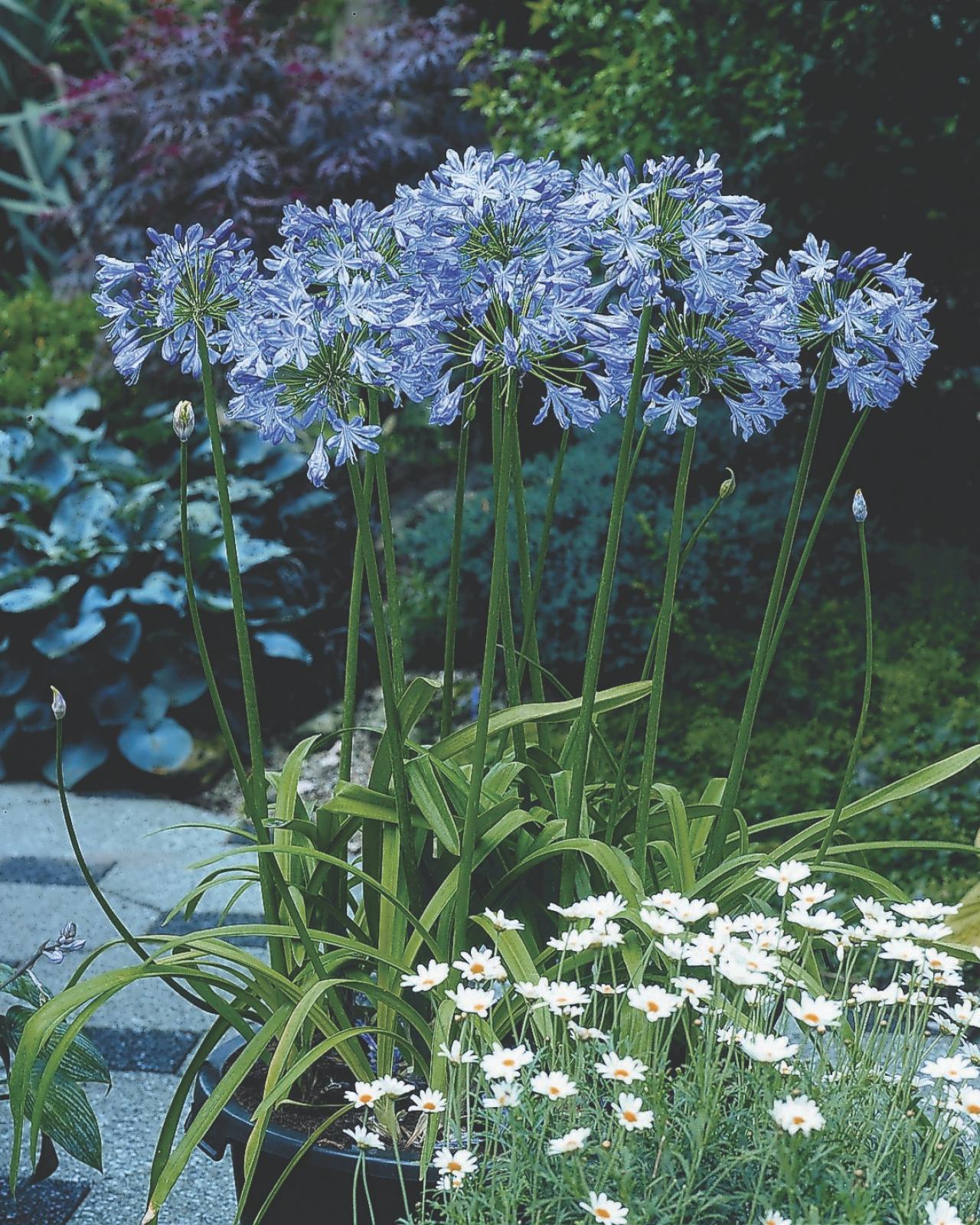Mastering the Art of Agapanthus Care: Necessary Steps for Healthy Growth and Dynamic Flowers
In the world of cultivation, the growing of agapanthus stands as a satisfying venture for those who look for to support these elegant flowering plants. With their striking flowers and graceful foliage, agapanthus has captured the focus of gardeners worldwide. Nonetheless, achieving optimal growth and lively blossoms requires a nuanced method that includes various vital steps. From choosing the ideal variety to understanding trimming strategies, the journey towards growing thriving agapanthus plants is complex and holds the crucial to opening the complete possibility of these agricultural treasures.

Picking the Right Agapanthus Variety

When choosing the best Agapanthus range for your garden, take into consideration aspects such as climate viability, bloom shade, and growth routine. Additionally, think about the environment in your region to make certain the Agapanthus selection you choose can grow in your certain conditions. Comprehending the growth routine of different Agapanthus selections is crucial for proper positioning within your garden.
Suitable Planting Conditions
Considering the ideal ecological requirements is crucial for successful Agapanthus growing. Agapanthus prospers in well-draining dirt with a slightly acidic to neutral pH degree. When growing, choose a place that obtains full sunshine to partial color. In hotter climates, offering some mid-day shade can avoid scorching of the fallen leaves. Agapanthus plants are sensitive to cold temperature levels and need to be safeguarded from frost throughout cold weather.
To make sure healthy growth and vibrant flowers, plant Agapanthus light bulbs at a depth of concerning 2-4 inches and space them 8-12 inches apart. Adding raw material, such as compost, to the dirt can boost water drainage and fertility, advertising durable origin growth. Mulching around the base of the plants helps retain dampness and suppresses weed growth. Routine watering is essential, specifically throughout the expanding period, to maintain the soil constantly damp but not saturated.
Watering and Feeding Tips
Preserving correct dampness degrees and supplying important nutrients are crucial aspects in the treatment program for Agapanthus plants. When it comes to watering Agapanthus, it is essential to strike a balance. These plants prefer continually moist soil but are at risk to root rot if overwatered.
Feeding Agapanthus he has a good point is crucial for advertising healthy development and prolific flowers. Apply a balanced fertilizer, such as a 10-10-10 formula, in the early springtime as brand-new development arises. By following these watering and fertilizing tips, you can guarantee your Agapanthus plants grow and produce dynamic, lasting blooms.
Pruning Techniques for Agapanthus
Pruning Agapanthus plants at the blog here suitable times and with proper techniques is essential for keeping their health and wellness and advertising ideal growth and flowering. The optimal time to prune Agapanthus remains in late winter months or very early springtime before brand-new development arises. Begin by removing any yellowing or dead fallen leaves near the base of the plant. Cut them as close to the ground as feasible without harming the emerging shoots.
Deadheading invested flowers can likewise reroute the plant's energy right into producing even more blossoms rather than setting seeds. If you desire to collect seeds for propagation, leave some flowers to dry and fully grown on the plant.
Remember to utilize tidy, sharp tools to make specific cuts and decrease the danger of presenting diseases. Agapanthus. Routine trimming will certainly help keep your Agapanthus looking cool and healthy and balanced while making certain a bountiful screen of gorgeous flowers
Managing Common Insects and Diseases
After making sure correct trimming strategies for Agapanthus, it is vital to attend to typical parasites and conditions that can impact the health and vitality of these plants. Agapanthus plants are typically sturdy however can still drop target to certain problems. One typical parasite that influences Agapanthus is the Agapanthus gall midge. This tiny, orange fly lays its eggs in the foliage, bring about altered development and blossom buds that fall short to open up. To fight this parasite, trim and destroy any type of afflicted plant parts and think about making use of insecticidal soap.
Furthermore, Agapanthus plants can suffer from origin rot if they are planted in inadequately draining pipes soil. By being attentive and taking timely activity against parasites and illness, you can aid your Agapanthus plants prosper and produce vivid blooms. Agapanthus.

Conclusion
To conclude, grasping the art of agapanthus care involves selecting the best variety, offering excellent growing problems, correct watering and feeding, ideal pruning strategies, and addressing common pests and conditions. By adhering to these essential actions, you can make certain healthy and balanced development and dynamic blooms for your agapanthus plants. Remember to routinely monitor and maintain your plants to advertise their general wellness and longevity.
To make certain healthy and balanced development and dynamic you can try here blooms, plant Agapanthus light bulbs at a deepness of regarding 2-4 inches and space them 8-12 inches apart. By adhering to these watering and feeding suggestions, you can ensure your Agapanthus plants grow and create dynamic, long-lasting blossoms.
One typical pest that influences Agapanthus is the Agapanthus gall midge. Additionally, Agapanthus plants can suffer from origin rot if they are planted in inadequately draining pipes soil. By adhering to these vital steps, you can make certain healthy development and lively blooms for your agapanthus plants.
Comments on “Expanding Agapanthus: A Full Guide to Beautiful Blooms”